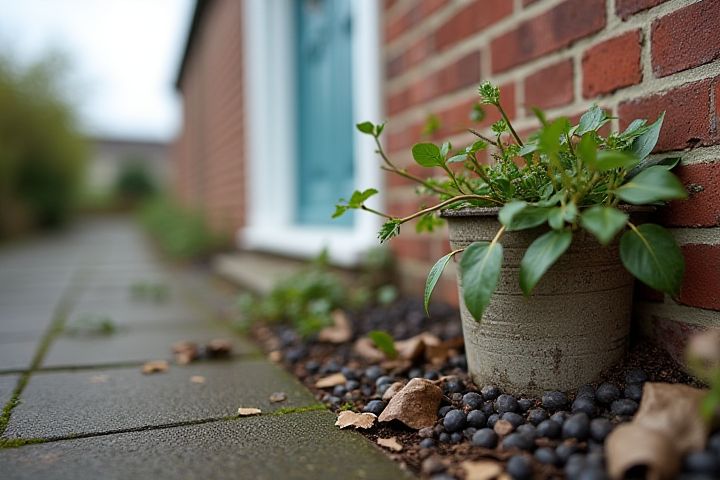
A well-constructed house typically lasts between 70 to 100 years, depending on factors such as materials used, maintenance, and environmental conditions. Key components, like the roof, foundation, and framing, contribute significantly to a home's longevity, with proper upkeep extending their lifespan considerably. Regular inspections and timely repairs can prevent deterioration caused by moisture, pests, and structural issues. Your choice of location also impacts durability, as homes in extreme climates may require additional reinforcement. Energy-efficient upgrades can enhance not only comfort but also resilience, ensuring that your home remains functional and safe for generations.
How Long Does A House Last
Building materials impact longevity
The lifespan of a house primarily depends on the building materials used, which can significantly influence durability and maintenance requirements. For instance, brick and stone structures can last over 100 years, while wood-frame homes may need substantial repairs or replacement after 30 to 50 years if not properly maintained. Metal roofing systems can endure 50 to 70 years, whereas asphalt shingles typically offer a shorter lifespan of 20 to 30 years. Choosing high-quality, weather-resistant materials and understanding their longevity can help you make informed decisions that extend the life of your home.
Regular maintenance extends lifespan
A well-maintained house can last anywhere from 50 to over 100 years, depending on its construction materials and the quality of maintenance it receives. Regular upkeep, including roof inspections every 3 to 5 years and HVAC servicing twice a year, significantly extends the lifespan of critical systems. It's recommended to repaint the exterior every 5 to 10 years to protect against weathering, while maintaining plumbing systems can prevent costly damages. By prioritizing regular maintenance, you can ensure that your home's value and functionality remain intact for generations.
Climate influences durability
The durability of a house largely depends on climate influences, with factors such as temperature, humidity, and precipitation playing critical roles. In arid regions, homes often face challenges like dry rot and cracking due to extreme heat, while coastal areas may suffer from corrosion and mold growth due to salt air and high moisture levels. A well-built house can last anywhere from 50 to over 100 years, with proper maintenance and materials tailored to withstand specific climate conditions. Investing in weather-resistant materials and climate-appropriate designs not only increases longevity but also enhances your home's overall resilience against environmental challenges.
Plumbing and electrical systems need updates
Most plumbing systems in a house can last around 50 to 70 years, while electrical systems typically have a lifespan of 30 to 40 years. Over time, factors such as corrosion, wear, and outdated materials can necessitate updates to ensure safety and efficiency. If your home is older than 30 years, consider having a professional inspect both your plumbing and electrical systems for potential upgrades. Investing in modern systems not only enhances functionality but can also increase your property value significantly.
Foundation condition is critical
The lifespan of a house is significantly influenced by the condition of its foundation, which is critical to overall structural integrity. A well-maintained foundation can contribute to a home's durability, often extending its lifespan to 50 years or more. However, factors like soil erosion, water drainage, and temperature fluctuations can adversely affect foundation stability, leading to costly repairs or even structural failure. To ensure your home lasts, regular inspections and maintenance of the foundation are essential, helping to prevent issues that could shorten its lifespan.
Roofing requires periodic replacement
The lifespan of a roof varies significantly depending on the material used; asphalt shingles typically last between 15 to 30 years, while metal roofs can endure for 40 to 70 years. Regular maintenance is essential, as neglecting issues like leaks or missing shingles can lead to more extensive damage and costly repairs. It is recommended to conduct a roof inspection every three to five years to identify potential problems early. Remember, a well-maintained roof not only protects your investment but also enhances your home's curb appeal.
Interior renovations may be necessary
A well-constructed house typically lasts for 70 to 100 years, depending on materials and maintenance. However, interior renovations may be necessary every 15 to 20 years to maintain aesthetic appeal and functionality. Key areas often updated include kitchens and bathrooms, where upgrades can yield a return on investment ranging from 50% to 80%. Regular assessments of your home's systems, like plumbing and electrical, can help identify when renovations are overdue to ensure long-term durability.
Local regulations may affect longevity
The average lifespan of a house typically ranges from 50 to 100 years, influenced significantly by local building codes and regulations. For instance, areas prone to extreme weather conditions, such as hurricanes or earthquakes, often require stricter construction standards, which can enhance durability. In regions with less stringent regulations, homes may face more rapid deterioration due to inadequate building practices. You should always consider local ordinances when planning renovations or construction, as compliance can greatly affect your home's longevity.
Original construction quality matters
A well-constructed house can last anywhere from 50 to over 100 years, depending significantly on the quality of materials and craftsmanship used during the original construction. High-quality foundation materials, durable roofing systems, and superior insulation can greatly extend a home's lifespan. For instance, homes built with concrete or brick foundations often endure longer than those with wood bases. Regular maintenance and timely repairs also play a crucial role in preserving your home's structural integrity and longevity.
Natural disasters can alter lifespan
The average lifespan of a well-built house is typically around 70 to 100 years, but natural disasters can significantly reduce this duration. For instance, homes in earthquake-prone areas may face severe structural damage within seconds, greatly impacting longevity. Floods can lead to mold growth and deterioration, potentially compromising a house in as little as six months if not properly restored. Understanding the risks associated with hurricanes, tornadoes, and other natural disasters can help you make informed decisions about building materials and maintenance to enhance your home's durability.
